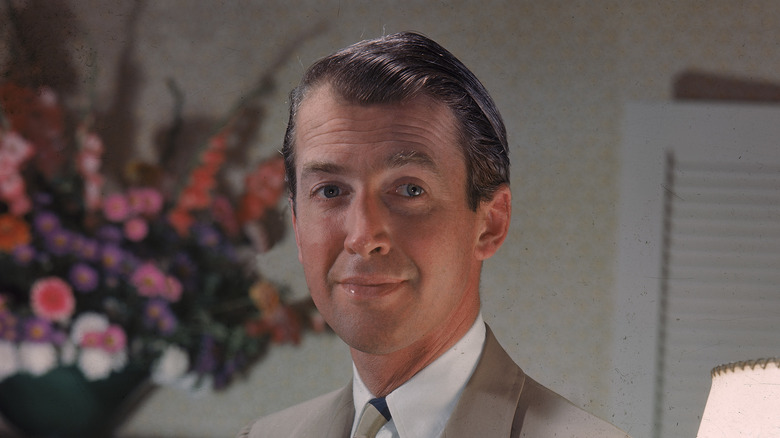What Jimmy Stewart Thought About Colorizing Movies
Regarded as one of the greatest actors in movie history, Jimmy Stewart carved out a bigger niche in Hollywood's Golden Age than most others. His iconic face would appear in at least 90 films throughout the course of his career, and he is considered by the American Film Institute as the third greatest male screen legend of all time (via Through The Clutter). However, changing times in the world of cinema raised a few concerns in Stewart's mind when it came time to start colorizing old films — a practice that he, unlike others in his trade, didn't exactly see as visionary.
In Stewart's eyes, movies like "It's a Wonderful Life" were made to be preserved in their original black-and-white format, and any rendition made to the initial product was nothing more than a defacement of its artistic presentation. Unlike other topics of debate, the issue of chromatic revision in movies was in fact very black and white to him.
Mr. Stewart goes to Washington
Jimmy Stewart decided that the only way to resolve the issue was to bring his grievance to the legislative level. In 1987, he drafted a letter to congress imploring them to help preserve director Frank Capra's intended aesthetic when a colorized version of "It's a Wonderful Life" started painting screens across the world. He considered it a gross violation of what the late director would have wanted, describing the depiction of Violet's character in actual violet as "the kind of obvious visual pun that Frank Capra never would have considered." He furthermore called the colorized version as a whole "a bath of Easter egg dye. (per Mental Floss)"
Later on, he stepped into rooms with legislatures in true Mr. Smith fashion, lobbying against the practice in person. However, it would seem that his efforts couldn't compete with what audiences wanted, as the colorized version of "It's a Wonderful Life" is readily available today.

